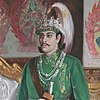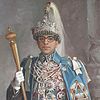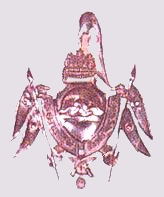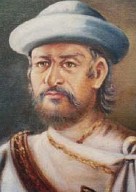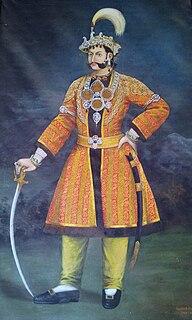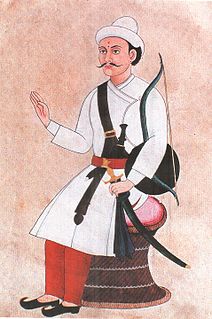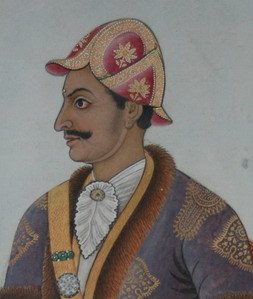This is a list of the Prime Ministers and other heads of government of the Kingdom of Nepal and later Democratic Republic of Nepal.

The Kingdom of Nepal, also known as the Kingdom of Gorkha or Gorkha Empire or the self designated Asal Hindustan, was a Hindu kingdom on the Indian subcontinent, formed in 1768, by the unification of Nepal. Founded by King Prithvi Narayan Shah, a Gorkhali monarch of Rajput origin from medieval India, it existed for 240 years until the abolition of the Nepalese monarchy in 2008. During this period, Nepal was formally under the rule of the Shah dynasty, which exercised varying degrees of power during the kingdom's existence.
Contents
- Prime Ministers of Kingdom of Nepal (1768-1803)
- Kajis equivalent to Prime Minister of Nepal (1768-1803)
- Chautariyas equivalent to Prime Minister of Nepal (1768-1803)
- Prime Ministers of the Kingdom of Nepal (1803–2008)
- Mul-Kajis and Muktiyars during the Shah expansion era and before the Rana era
- Prime Ministers before the Rana era (1845–1846)
- Prime Ministers during the Rana era (1846–1951)
- Prime Ministers during the Transition era (1951–1960)
- Prime Ministers during the Panchayat era (1960–1990)
- Prime Ministers during the Constitutional monarchy (1990–2008)
- Prime Ministers of the Federal Democratic Republic of Nepal (2008–present)
- Living former prime ministers
- References
- Footnotes
- Notes
- Books
- External links
- See also
The position of Prime Minister of Nepal (Nepali : नेपालको प्रधानमन्त्री; Nēpālakō pradhānamantrī) in modern form was called by different names at different times of Nepalese history. At the time of the Shah dynasty, the Mulkajis (Chief Kajis) or Chautariya served the function of Prime Ministers in a council of 4 Chautariyas, 4 Kajis, and sundry officers. These Bharadars (officers) were drawn from high caste and politically influential families such as Pande dynasty, Basnyat dynasty, Thapa dynasty, etc. The nobility of Gorkha was mainly based from Chhetri families and they had a strong presence in civil administration affairs. [1] All of the Prime Minister of Nepal between 1768 to 1950 were Chhetris with the exception of Ranga Nath Poudyal, being a Brahmin. [2] The executive power allocation was fluctuating between Kajis and Chautariyas. In 1804, a single authoritative position of Mukhtiyar was created by Rana Bahadur Shah which carried the executive powers of nation. [3] Mukhtiyar held the position of Executive Head till adoption of title of Prime Minister on November 1843 A.D. by Mathabar Singh Thapa who became Mukhtiyar as well as Prime Minister and Commander-In-Chief of the Nepalese army. [4] [5] During the Rana dynasty, the position of Prime Minister was hereditary and the officeholder held additional titles — Maharaja of Lambjang and Kaski, Supreme Commander-in-Chief of Nepal and Grand Master of the Royal Orders of Nepal.

The Prime Minister of Nepal is the leader of the executive body. The prime minister is the head of the Council of Ministers of Nepal. He/she should be member of the House of the Representative Pratinidhi Sabha. The prime minister is the senior-most member of cabinet in the executive of government in a parliamentary system. The prime minister selects and can dismiss members of the cabinet; allocates posts to members within the government; and is the presiding member and chairperson of the cabinet.

Nepali is an Indo-Aryan language of the sub-branch of Eastern Pahari. It is the official language of Nepal and one of the 22 scheduled languages of India. Also known by the endonym Khas kura, the language is also called Gorkhali or Parbatiya in some contexts, It is spoken mainly in Nepal and by about a quarter of the population in Bhutan. In India, Nepali has official status in the state of Sikkim, and significant number of speakers in the states of Arunachal Pradesh, Himachal Pradesh, Manipur, Mizoram, Uttarakhand and West Bengal's Darjeeling district. It is also spoken in Burma and by the Nepali diaspora worldwide. Nepali developed in proximity to a number of Indo-Aryan languages, most notably the other Pahari languages and Maithili, and shows Sanskrit influence. However, owing to Nepal's location, it has also been influenced by Tibeto-Burman languages. Nepali is mainly differentiated from Central Pahari, both in grammar and vocabulary, by Tibeto-Burman idioms owing to close contact with this language group.
The history of Nepal is intertwined with the history of the broader Indian subcontinent and the surrounding regions, comprising the areas of South Asia and East Asia.
After Revolution of 1959, non-aristocratic citizens like Matrika Prasad Koirala held the position of Prime Minister still under the declaration of the King of Nepal. The first election of Primeministership was held on 1959 and Bishweshwar Prasad Koirala became the first elected Prime Minister of Nepal. Subsequently, he was deposed and imprisoned in 1960 by King Mahendra Bir Bikram Shah who went on to establish the oligarchic authoritative regime of Panchayat system and Nepal did not have a democratic government until 1990. After the Jana Andolan movement in 1990, the country became a constitutional monarchy. The monarchy was abolished on 28 May 2008 by the [[1st Nepalese Constituent Assembly|1st Constituent Assembly].

Matrika Prasad Koirala was the Prime Minister of Nepal for two terms.

The King of Nepal was Nepal's head of state and monarch from 1768 to 2008. He served as the head of the Nepalese monarchy—Shah Dynasty. The monarchy was abolished on 28 May 2008 by the 1st Constituent Assembly. The subnational monarchies in Mustang, Bajhang, Salyan, and Jajarkot were also abolished in October.
Panchayat was the political system of Nepal from 1960 to 1990. It was based on the Panchayat system of self-governance historically prevalent in the Indian subcontinent.







